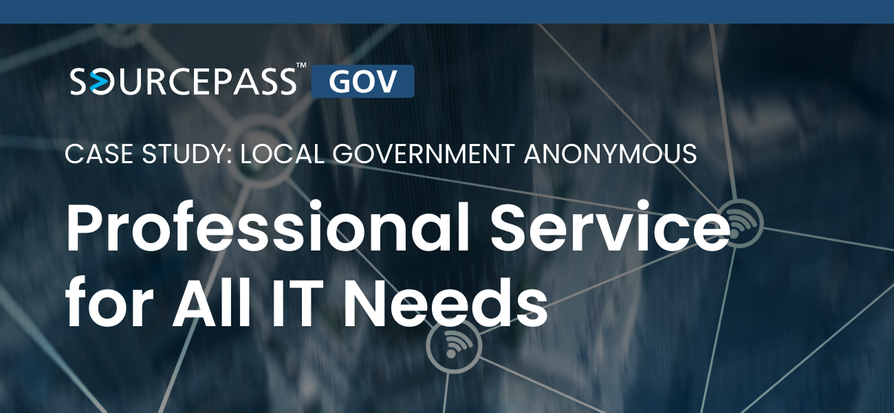WELCOME TO SOURCEPASS GOV
Supporting the Public Sector
with Best-in-Class IT
Award-winning managed IT services for local government, education, law enforcement, and first responders.
WELCOME TO SOURCEPASS GOV
Protecting Education
Cost-Effective IT Solutions and Services for K-12 Schools and Higher Education.
Learn more Speak with a Specialist
WELCOME TO SOURCEPASS GOV
Law Enforcement & First Responders
Supporting those who protect and serve.
Managed IT Services
Comprehensive Support and
Solutions
Cybersecurity
Advanced Solutions and Expertise
to Guard Against Threats
Network Infrastructure
Implementation & Management
of Enterprise Networks
Equipment Maintenance
Expert Management of
Contracts, Grants and RFPs
Managed IT Services & Cybersecurity for the Public Sector
Sourcepass GOV is the industry's fastest growing IT service provider for the public sector, focused on providing an IT experience that clients love.
Our experienced, award-winning team focuses on developing a personal relationship with our clients, learning about your needs and how best to apply technology to solve problems and create new opportunities.
Let us show you how we can transform your public sector entity to increase scalability, meet cybersecurity goals, and drive growth.
Focused on supporting
you and your dedication to the public.
Managed IT
Our fully managed IT service plan delivers a strategic engagement combined with responsive technical services and innovative solutions to support your IT needs, improve employee experience, and drive growth.
Co-Managed IT
If you have existing IT staff but are looking for added support, our team can act as an extension of your IT focusing on key areas, such as cloud engineering, project management, and cybersecurity services allowing your internal IT team to focus on your critical objectives.
.png?width=1000&height=667&name=Rounded%20Edge%20Graphics%20600x400px%20(6).png)
QUEST™
Next generation client experience.
By becoming a Sourcepass GOV client, you'll unlock Quest™, our revolutionary platform designed for a next-level IT client experience.
Enjoy lightning-fast access to service details, real-time project updates, and robust automation for onboarding new employees and more. Now available on mobile iOS and Android devices!
Cybersecurity
Our Managed IT Services plans include powerful security tools and our 24x7 security operations center services to protect your employees, devices, and network against security threats while ensuring your data and applications remain available and protected.
Security Advisory
Our team of certified cyber risk advisors will assess your security posture, identify risks, improve security outcomes, and work with you to establish policies and procedures to meet your security goals and compliance requirements.
CLIENT SUCCESS
Build a winning strategy.
Our experienced, award-winning team focuses on developing a personal relationship with our clients, learning about your needs and how best to apply technology to solve problems and create new opportunities.
Case Studies & Success Stories
See why professionals across local government, public education, law enforcement, and first response choose Sourcepass GOV for managed IT services, cybersecurity, digital transformation, and beyond.

The Port Washington Police District (PWPD), located in NY, has a mission to provide channels to promote and preserve public safety, and to consistently find ways to ensure a safe and secure environment.


Dedicated to excellence.
Sourcepass has achieved SOC 2 Type II and ISO 27001 certifications, reflecting our commitment to safeguarding the confidentiality, integrity, and availability of data, environments, and cybersecurity processes for both clients and trusted partners alike.
IT Insights
Get the latest best practices, industry updates, and pro tips from the experts at Sourcepass GOV.
2 min read
The Costs of Phishing Attacks on Schools: Financial, Operational, & Reputational Damage
by Julia Nolan
Webinar: Microsoft Teams for the Public Sector
by Courtney Noonan
.png?width=1275&height=1275&name=Contact%20Us%20(5).png)
Begin your journey today.
Get started today by contacting one of our experienced consultants. We'll guide you step by step to modernize your IT, drive meaningful outcomes, and achieve your goals.


.png?width=534&height=400&name=GOVFeatured%20Case%20Study%20(1).png)
